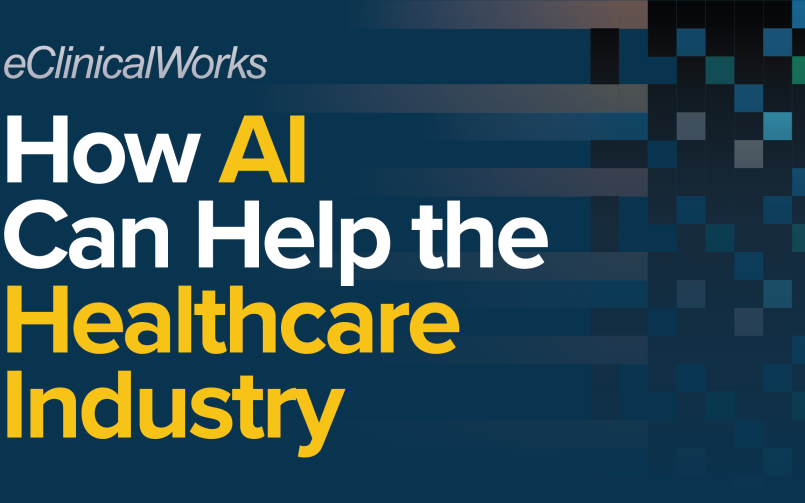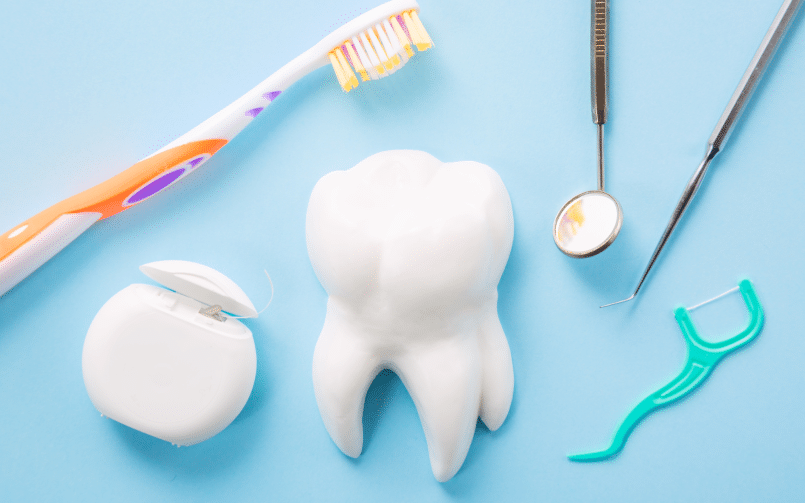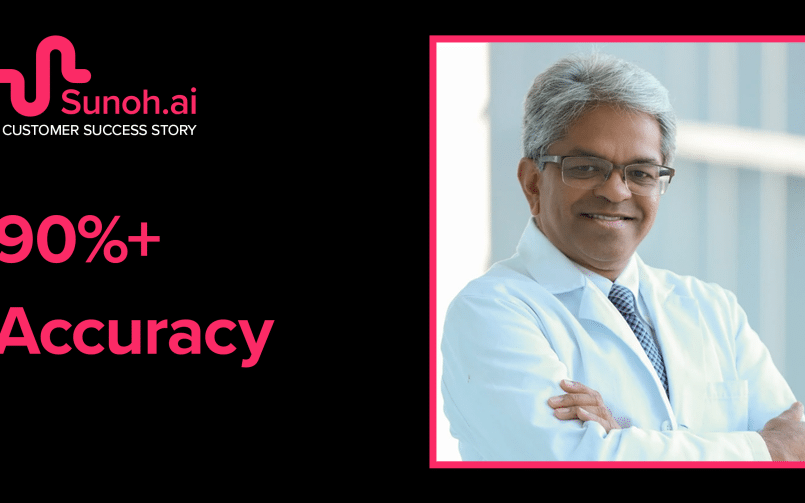AI medical scribe

- 20 March, 2025
- blog
Sunoh.ai: The Trusted Multilingual AI Scribe
A study published in the New England Journal of Medicine Catalyst in March 2024, titled “Ambient Artificial Intelligence Scribes to Alleviate the Burden of Clinical Documentation,” examined the extensive implementation of AI medical scribes by physicians at The Permanente Medical Group.
Read Continue
- 13 March, 2025
- blog
Spreading the Word About What Happened in Vegas
A well-known advertising slogan proclaims that "what happens in Vegas, stays in Vegas." But when it comes to the healthcare IT on display at HIMSS25, the mission is exactly the opposite — spread the news as far as possible.
Read Continue
- 9 January, 2025
- blog
Unveiling Trends Set to Transform Healthcare in 2025
In 2016, a paper in the Yearbook of Medical Informatics — Electronic Health Records: Then, Now, and in the Future — noted that although, over the previous 25 years, computer hardware had become "more affordable, powerful, and compact," many of the early expectations for the EHR had still not been realized.
Read Continue
- 27 November, 2024
- blog
eClinicalWorks: The One-Stop Solution for Cutting-Edge AI Tools
Artificial Intelligence (AI) is no longer a futuristic concept, but is becoming an integral part of modern healthcare. It is a dynamic, active player transforming healthcare.
Read Continue
- 27 September, 2024
- blog
Sunoh.ai – The Ultimate AI Scribe Solution for your Healthcare Practice
The AI medical scribe solution integrated within eClinicalWorks EHR is transforming clinical documentation Provider burnout is a growing healthcare crisis. According to a review by the American Medical Association, it affects 63% of providers. One of the leading causes of burnout is the administrative burden that comes with clinical documentation.
Read Continue
- 15 August, 2024
- blog
The ABCs of Back to School — for Patients and Practices
They are the three little words that students and teachers nationwide (and some medical practices) dread: Back to school!
Read Continue
- 8 August, 2024
- blog
Revolutionizing Patient Care with eCW AI and Cloud-Based Solutions
At a recent eClinicalWorks hosted event, Healthcare IT Today interviewed select eClinicalWorks customers who’ve implemented the eClinicalWorks Cloud-based EHR and AI solutions and discussed at length how the products have had a positive impact on their healthcare practices.
Read Continue
- 30 July, 2024
- blog
How AI Can Help the Healthcare Industry
eCW Poll Identifies Key Challenges and Solutions Whatever their specialty, however large their practice, and regardless of how diverse their patient populations may be, America's healthcare professionals share a common challenge — administrative tasks. Year after year, case studies, surveys, polls, and anecdotal evidence agree that grappling with office administration — everything from check-in and insurance authorizes to care documentation, fax boxes, and gathering patient records — is among the biggest challenges in healthcare. All that administrative work generates an ever-growing flood of data. And while much of it is essential to providing prompt, quality care to patients, it is also very easy to lose one's way amid such work. That can leave doctors and staff feeling disconnected — both from the patients they care for and from their own families and personal lives — as their administrative work consumes their evenings, cutting into the "pajama time" we all need to rest, relax, and recharge. Our May 2024 poll of more than 120 healthcare professionals confirms these findings. Indeed, 41 percent of respondents told us they are spending four or more hours every day on documentation alone. That's like spending half your workday simply recording what you did during the other half. But remember that, in medicine, there are few timeouts. Patients keep coming, data keeps flowing in, and the time for completing documentation and other administrative work often extends beyond the hour when the office closes — and can run well into the evening.
Read Continue
- 26 July, 2024
- blog
How to Maximize Efficiency of an AI-Powered Medical Scribe
The healthcare industry has always been a frontrunner in embracing innovations, and artificial intelligence (AI) is no exception. A striking example is the growing use of AI medical scribes like Sunoh.ai, designed to automate clinical documentation and reduce the burden of administrative tasks. According to research, AI scribe saves doctors an hour at the keyboard every day, thereby allowing healthcare providers more time to connect with their patients. Remember, technology is a tool, and effective communication is the secret sauce that will help healthcare professionals get the best out of AI medical scribes. This will not only enhance productivity but also enhance patient satisfaction and overall healthcare delivery. Here are some insightful communication tips to optimize your use of AI medical scribes:
Read Continue
- 6 June, 2024
- blog
Dental Practices Keep Brushing Up on Technology
How Sunoh.ai medical scribe can advance care Ask someone to list major medical advances, and they are likely to list such things as the eradication of polio, the development of new drugs, the mapping of the human genome, or breakthroughs that are helping improve cancer survival rates. It’s easy to forget about dental care. But good oral health, so often overlooked, remains a vital part of leading a full and healthy life. The list of advances in dentistry is impressive, from the use of drugs to numb pain to more precise and less invasive ways to detect and treat dental decay. Digital radiography has reduced patients’ exposure to X-rays. Silver amalgams have largely been replaced with safer, natural-looking materials. But there’s another way that today’s dental providers can improve their practices and better serve patients—by adopting an AI medical scribe known as Sunoh.ai. eClinicalWorks recently announced that it is integrating Sunoh.ai into dental clinics across the country.
Read Continue
- 16 May, 2024
- blog
A Revolutionary Approach to Enhance Clinical Workflows
At some point in the journey of any medical practice, providers and staff encounter the challenge of managing success. With new patients, they need new ways to improve efficiency, speed up workflows, and capture revenue. But how practices think about their healthcare IT can spell the difference between being overwhelmed and successfully managing growth. A traditional approach might work One approach is to simply add new tools for everything from telehealth and Population Health to improved interoperability and billing. That may work, but busy practices often lack the time needed for training. The challenges can be so many — and seem so overwhelming — that practices find themselves underutilizing many of the solutions they are paying for.
Read Continue
- 11 April, 2024
- blog
Revolutionizing Visit Notes with AI-Powered Ambient Listening Technology
Regional Medical Associates Streamlines Clinical Documentation with Sunoh.ai, Saves Up To 90% Time. Technology that saves time and improves efficiency is a game-changer. For most medical professionals, clinical documentation, while crucial, has always been a time suck. Accuracy is paramount. That means spending time manually documenting patient information rather than focusing on patient care. Regional Medical Associates (RMA) discovered a solution to this challenge with Sunoh.ai, a cutting-edge AI medical scribe.
Read Continue